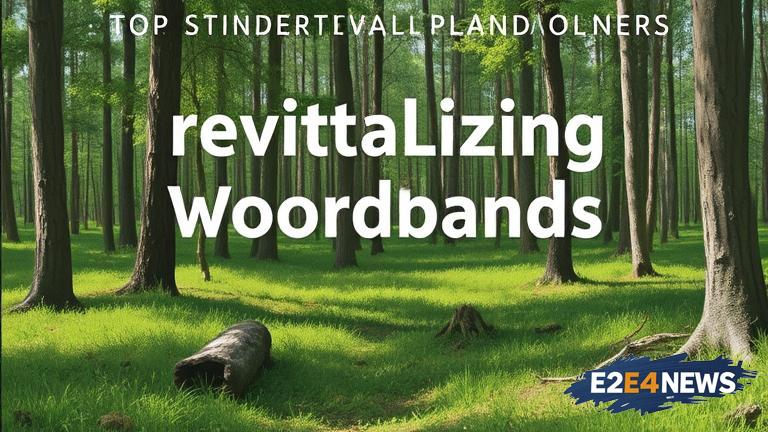The updated Woodland Carbon Code has been launched, offering improved guidance and support for small landowners seeking to create new woodlands and promote sustainable forestry practices. This revised code aims to increase carbon sequestration, enhance biodiversity, and support the rural economy. The Woodland Carbon Code is a voluntary standard that verifies the carbon sequestration potential of newly created woodlands, providing landowners with a framework to develop and manage their woodlands effectively. The updated code includes new features, such as a simplified registration process, improved guidance on woodland design and management, and enhanced support for small landowners. Small landowners, who own less than 100 hectares of land, can now benefit from reduced registration fees and tailored guidance, making it easier for them to participate in the Woodland Carbon Code. The code also provides a framework for landowners to monitor and report on the carbon sequestration potential of their woodlands, enabling them to demonstrate their commitment to sustainable forestry practices. The updated code has been developed in collaboration with industry stakeholders, including the Forestry Commission, Confor, and the Woodland Trust. The Woodland Carbon Code is an essential tool for landowners seeking to create new woodlands, as it provides a recognized standard for carbon sequestration and sustainable forestry practices. The code is also aligned with the UK Government’s 25-Year Environment Plan, which aims to increase woodland cover and promote sustainable land use. The revised code includes new guidance on woodland creation, including the use of natural regeneration and agroforestry techniques. Landowners can now use the code to develop woodlands that not only sequester carbon but also provide habitat for wildlife and support rural livelihoods. The updated code also includes a new section on monitoring and maintenance, providing landowners with guidance on how to ensure the long-term health and productivity of their woodlands. The Woodland Carbon Code is a key component of the UK’s efforts to combat climate change, as woodlands play a critical role in sequestering carbon dioxide from the atmosphere. The code has already been successfully used by hundreds of landowners across the UK, and the updated version is expected to attract even more participants. The revised code is also expected to support the development of new woodland creation projects, including those focused on urban forestry and community-led initiatives. The Woodland Carbon Code is a vital tool for promoting sustainable forestry practices and supporting the rural economy, and the updated version is a significant step forward in achieving these goals. The code is available online, and landowners can register their woodlands and access guidance and support through the Woodland Carbon Code website. The updated code has been welcomed by industry stakeholders, who recognize the importance of sustainable forestry practices in supporting the rural economy and combating climate change. The Woodland Carbon Code is a testament to the UK’s commitment to sustainable land use and its efforts to promote environmentally friendly practices. The revised code is expected to have a positive impact on the environment, supporting the creation of new woodlands and promoting sustainable forestry practices. The code is also expected to support the development of new industries and job opportunities in the forestry sector, contributing to the growth of the rural economy.
